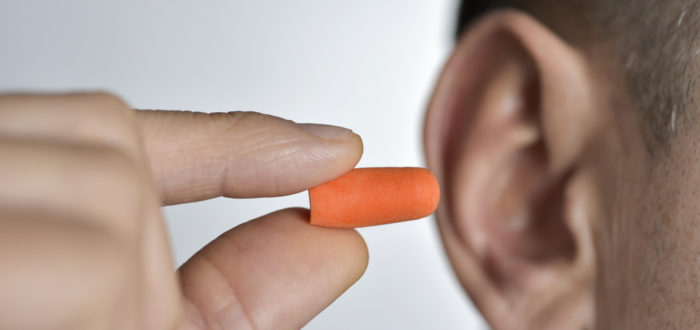Noise Induced Hearing Loss (NIHL) from exposure to excessive sound can affect anyone and it’s extremely prevalent in the US with 40 Million sufferers. The severity of damage varies, it can include short or long term tinnitus symptoms and permanent or deteroritive hearing loss.
It is preventable, and it is treatable but there is no cure for permanent damage.
As such it is in everyone’s interest to understand how to protect themselves from developing NIHL.
What is NIHL?
NIHL is a type of sensorineural hearing loss. It’s classically characterized by a progressive loss of high frequency hearing sensitivity over time. It usually occurs in both ears but not always symmetrically. Acoustic trauma such as firing a rifle can cause asymmetric NIHL.
Tinnitus is another part of NIHL, it’s described as the “perception of sound in the absence of any external stimulus”. That is, only the sufferer can hear the buzzing, ringing, or hissing sounds.
Scientific study has determined that, after excessive noise has stimulated cells in the inner ear, a chemical process called “apoptosis” occurs. For example, hair cells that pick-up and transmit sound to the brain, get damaged and fragment. They then serve as “scar tissue” to maintain the structural integrity of the system, but these supporting cells do not contribute to the active process of hearing anymore.
The more damaged hair cells the more reduction in hearing ability. Damage occurs from exposure to excessive loud sound over a prolonged period of time or from acute, high intensity noise.
What Are The Symptoms of Noise Induced Hearing Loss?
NIHL typically develops gradually, subtle clues are there. I.e. turning the volume up or missing parts of conversations when background noise is present or in a group.
Hearing tests will pick up these reductions in high frequency hearing loss that would otherwise go unnoticed. Early detection could be the intervention that prevents further damage. Don’t wait until for example normal conversation in quiet environments is what sends you to a professional.
Be vigilant – These are warning signs of hazardous noise levels
- You can’t hear someone talking three feet away
- You have a “full” feeling in your ears after leaving a noisy area
- You hear ringing or buzzing after leaving a noisy area
- You suddenly have difficulty understanding speech after exposure to noise; you can hear talking but have difficulty understanding words.
What Causes NIHL?
Sounds of 85 decibels and above for long or repeated periods can cause noise induced hearing loss. The louder the sound, the shorter the amount of time it takes for NIHL to happen.
Some examples of common sounds we encounter are…
- Heavy city traffic 85 decibels
- Motorcycles 95 decibels
- MP3 player at maximum volume 105 decibels
- Sirens 120 decibels
- Firecrackers/ firearms 150 decibels
Other risks are workplace machinery and open-plan offices. Hobbies such as motorsport, live music and sporting activities, pubs and restaurants. At home lawn mowers, leaf blowers, and woodworking tools.
Protecting Your Hearing From NIHL
Noise doesn’t have to damage your hearing. There are steps that you can take to protect your hearing from noise induced hearing loss. These include:
- Wear earplugs or other protective devices when involved in a loud activity (activity-specific earplugs and earmuffs are available at hardware and sporting goods stores).
- If you can’t reduce the noise or protect yourself from it, move away from it.
- Protect the ears of children who are too young to protect their own.
- Make family, friends, and colleagues aware of the hazards of noise.
- Plan outings to noisy environments to limit your exposure
- Speak to your workplace about strategies to reduce noise risks
Get Your Hearing Checked at Hearing Services of Delaware
Stay on top of your hearing health with regular hearing assessments. Book an appointment with the hearing specialists at Hearing Services of Delaware today. We are here to help! Contact us today to schedule an appointment with one of our certified hearing care professionals.

